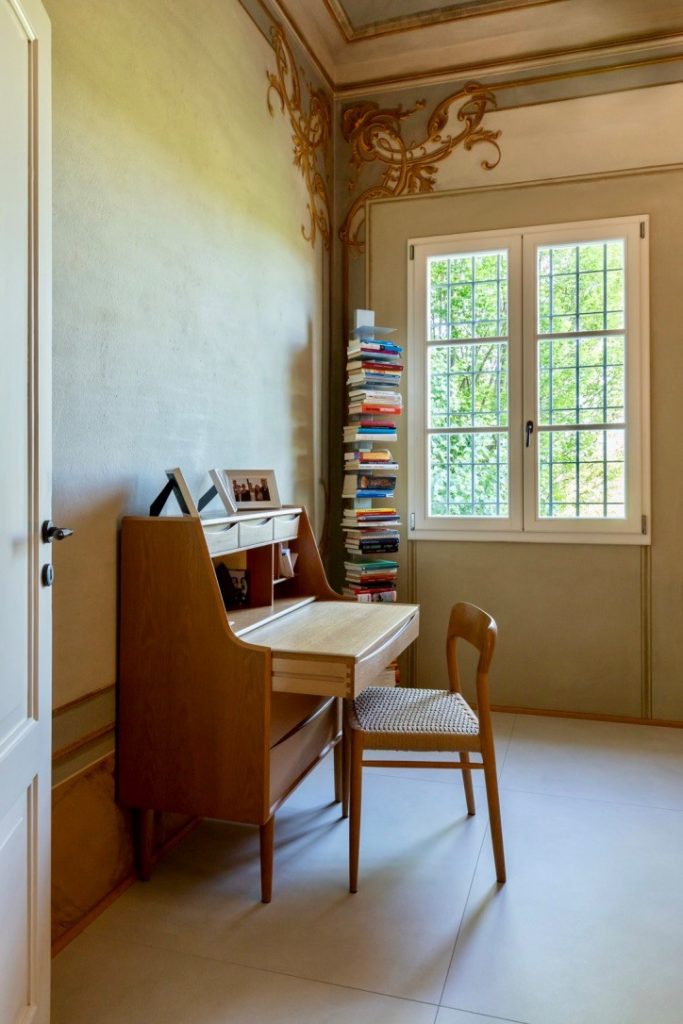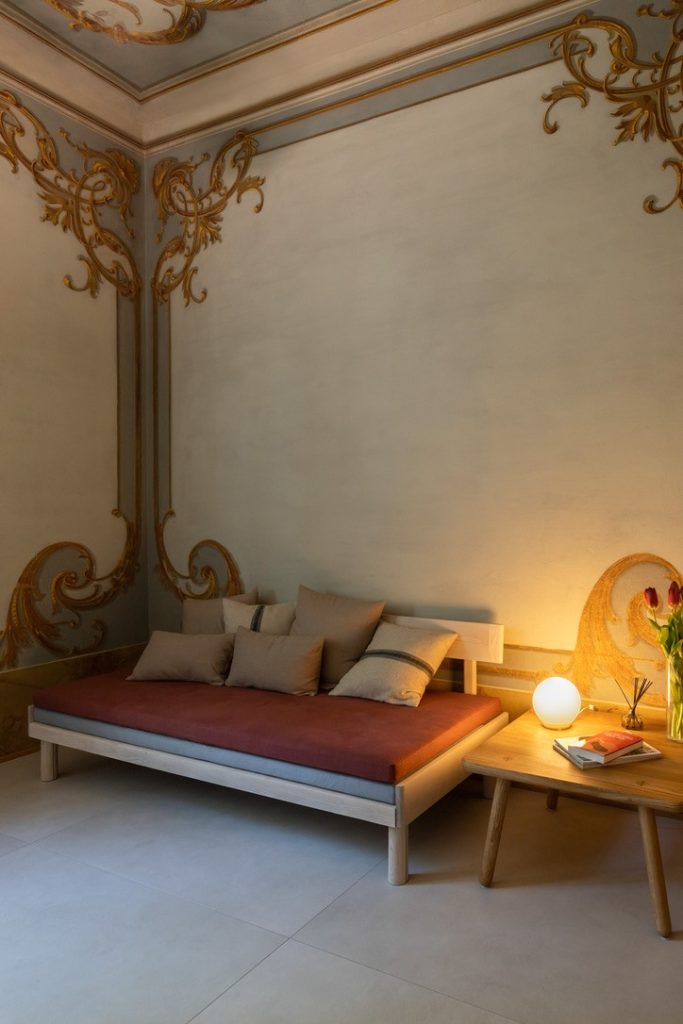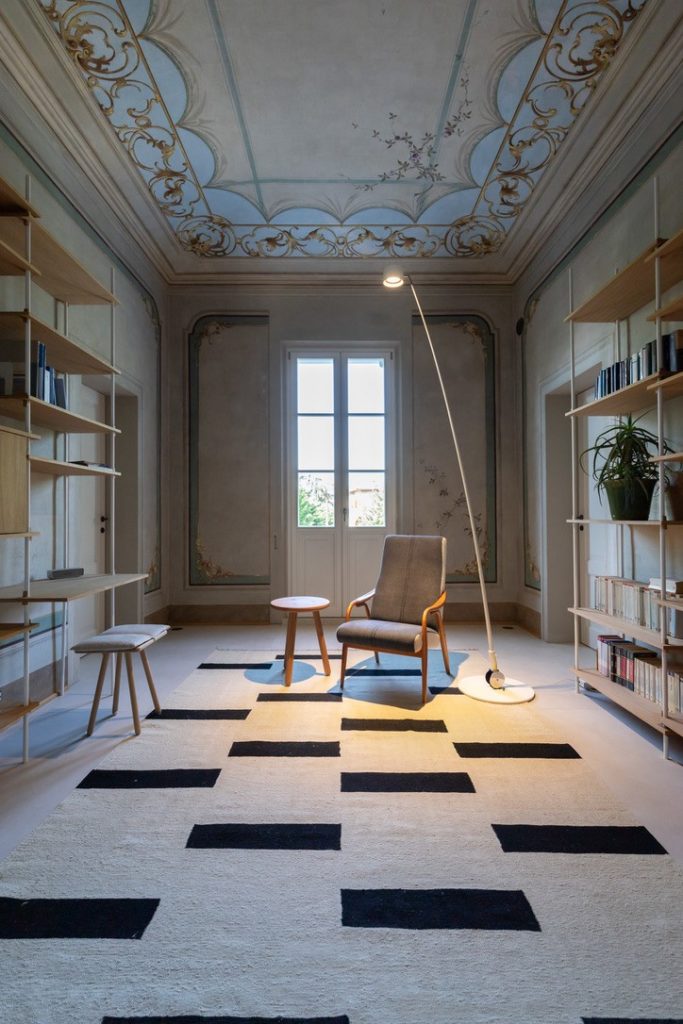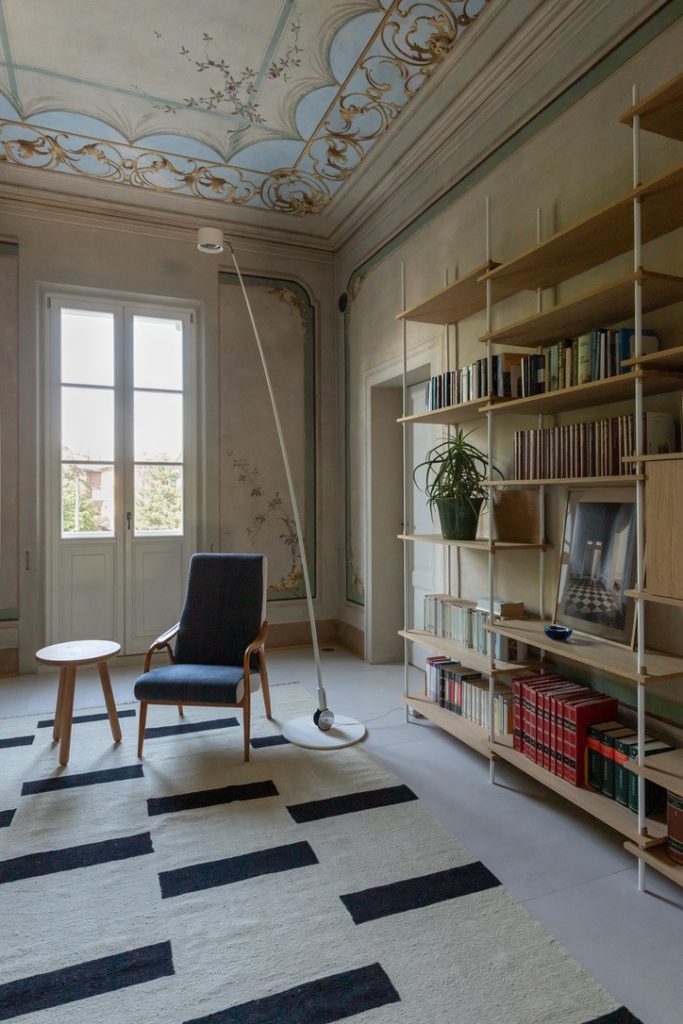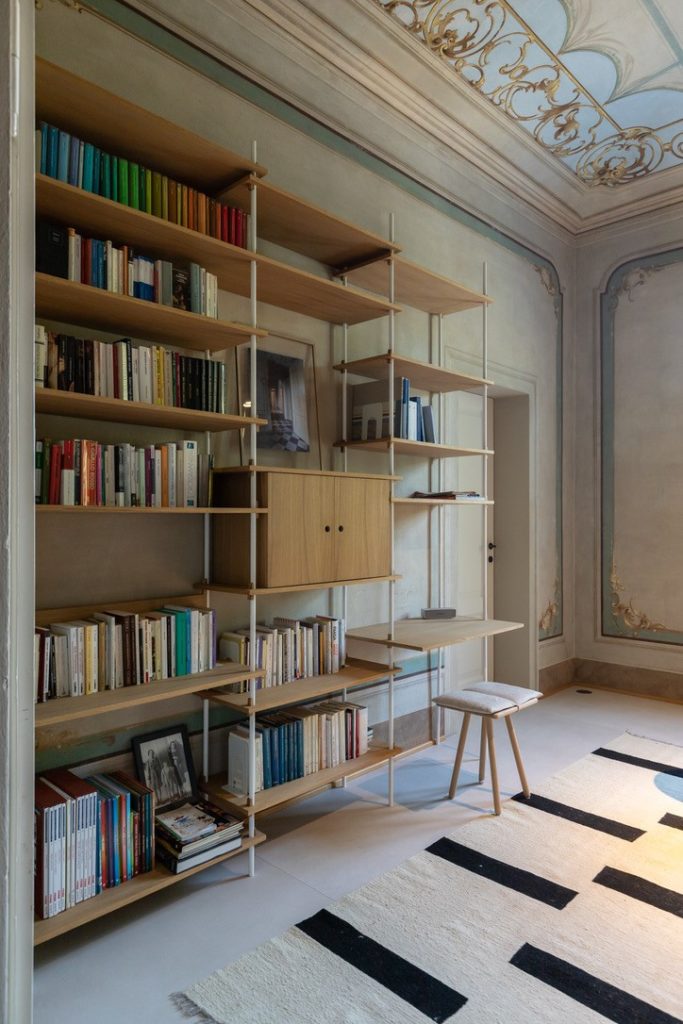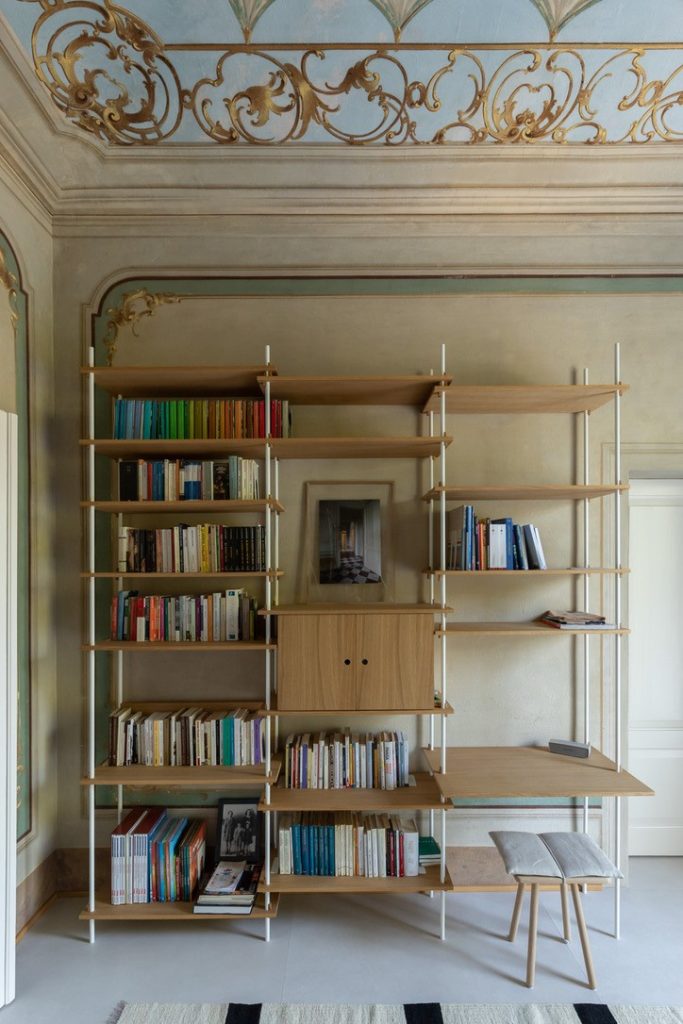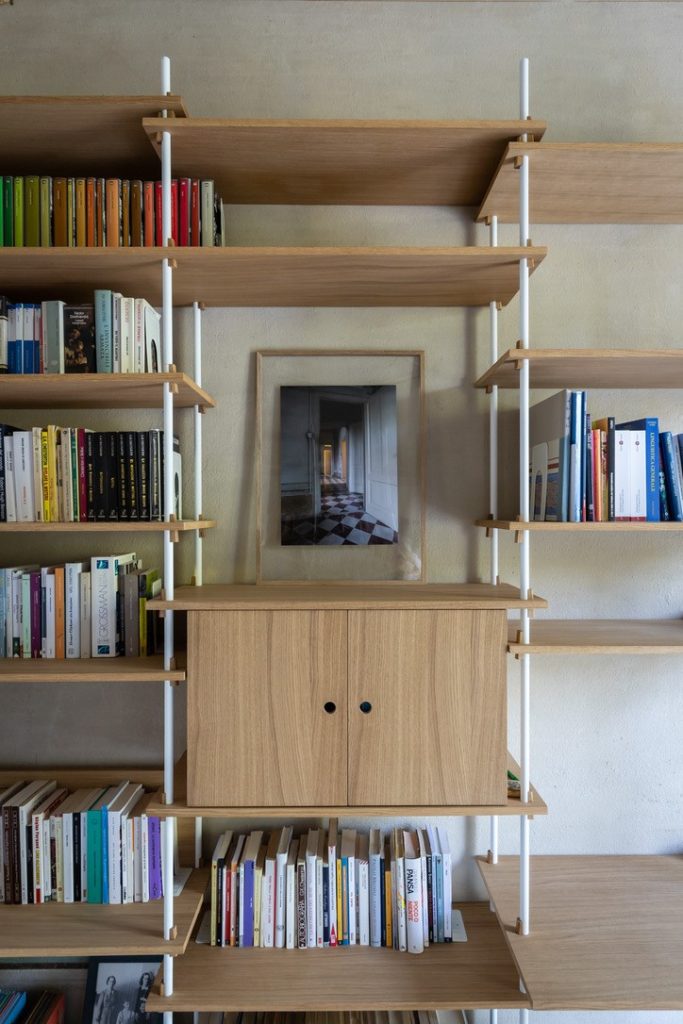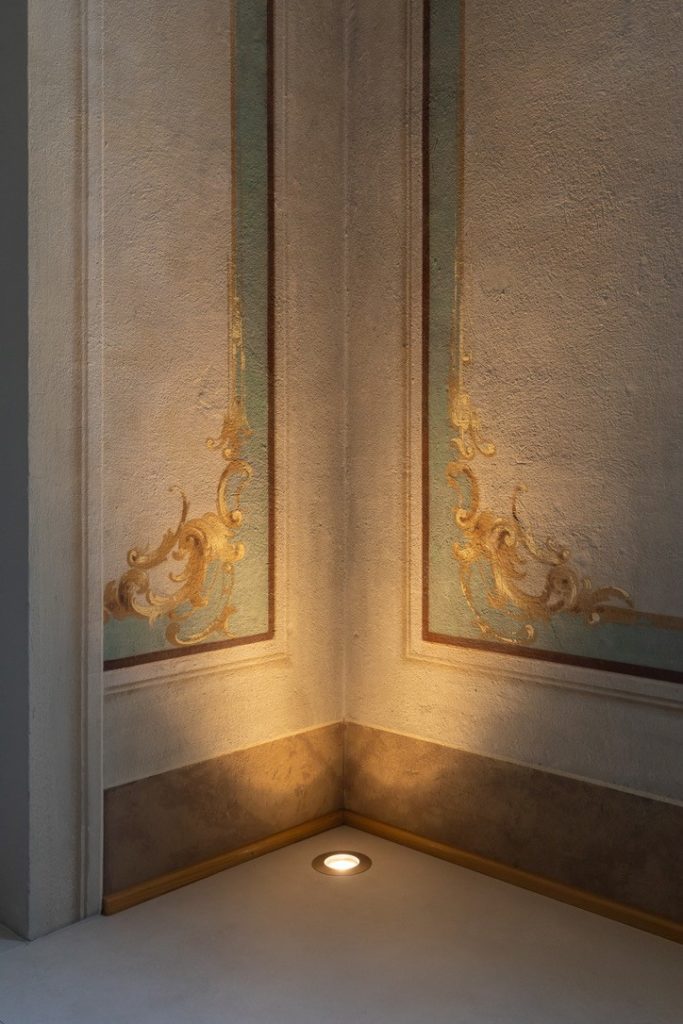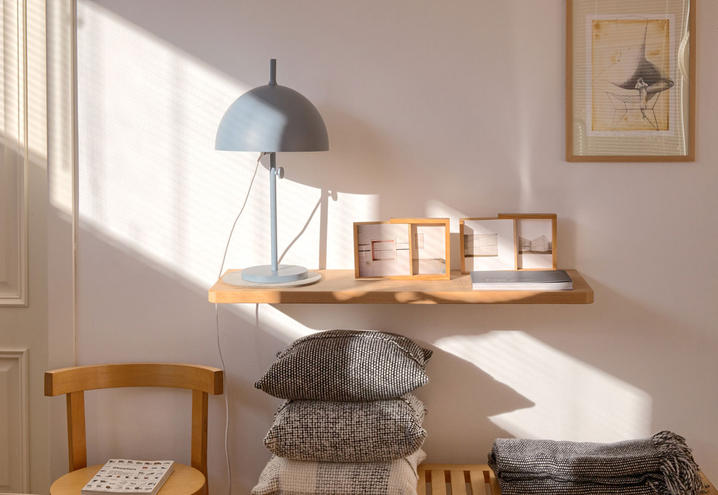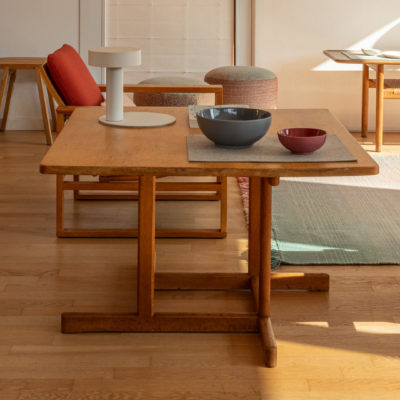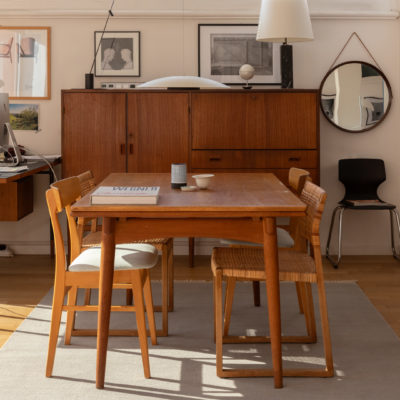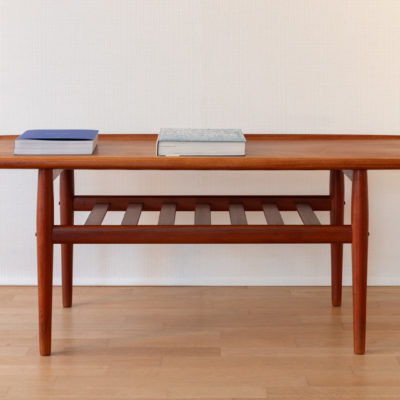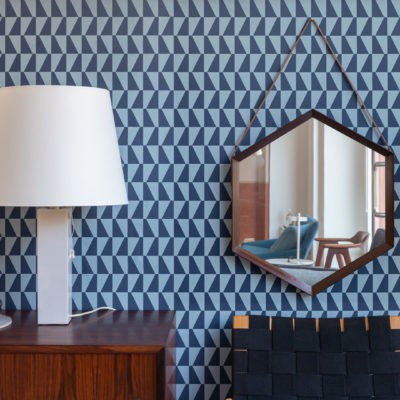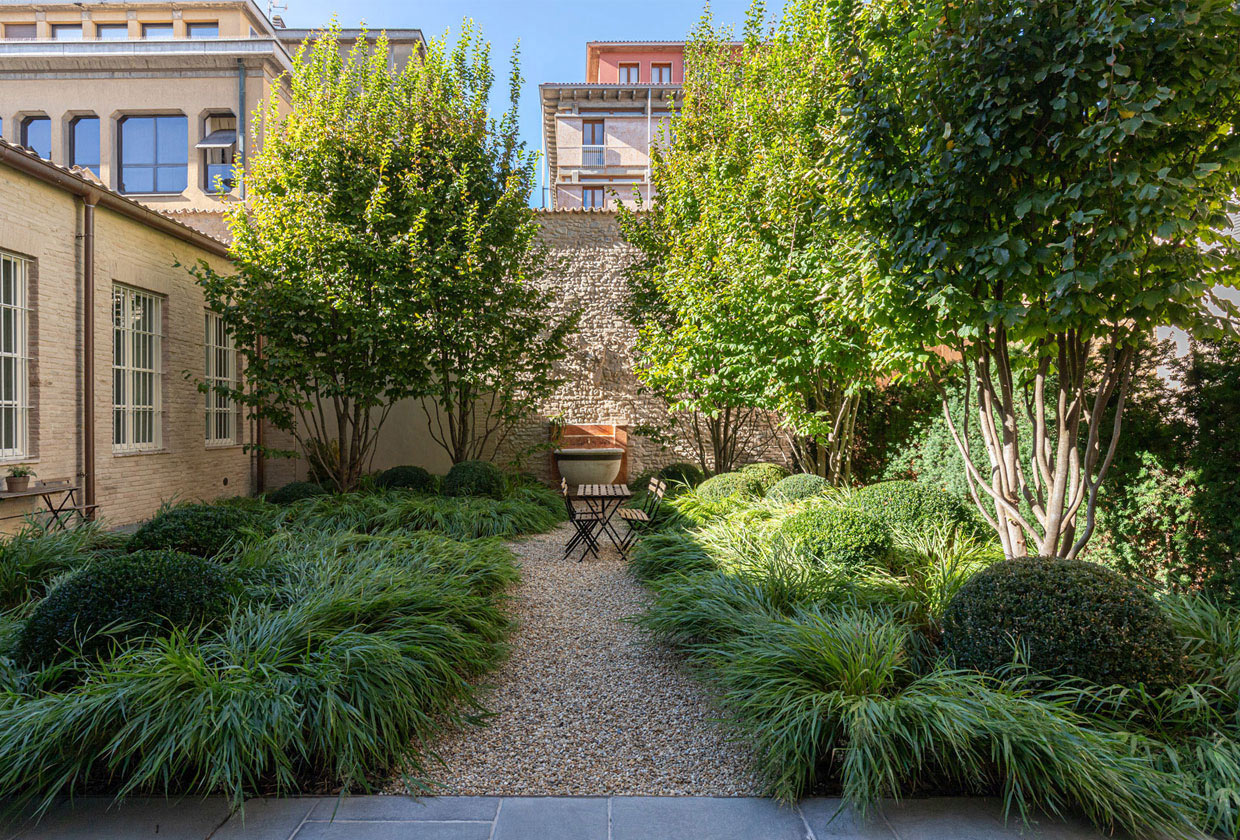The second story we propose concerns the renovation of a villa from the end of the 19th century, located in Casinalbo, near Modena.
The renovation, designed and supervised by the architect Luca Jop, took into account the origin of the house in all its parts. Where it was possible, it was decided to keep materials, decorations and structural parts entirely.
The current owners say that during the first phase of the renovation, some artefacts were discovered under the floor of one of the rooms on the ground floor, including a French magazine dated 1903 “Petit Republic”, which was then framed and kept in the environment itself.
The wooden floor of the stairwell is the original one of the house, while in the other rooms, it was necessary to replace it, due to thickness requirements, to construct the systems.
In some ceilings, such as the external entrance loggia and one of the bedrooms on the first floor, the original frescoes have been rediscovered and brought to light.
Throughout the rest of the villa, the frescoes on the walls and ceilings have been restored and returned to their original state.
The intervention of this period villa is the fusion between respect for the past and the functional needs of today’s life.
Once again, the dialogue between past and present finds balance and harmony.
The house, in its typical Emilian villas built between the 19th and 19th centuries, has been interpreted in a true, respectful, sober and elegant way.
We find ourselves still breathing an echo of the past but simultaneously in a current and renewed dimension.
I was called to collaborate on the definitive interior design by architect Jop.
The work and choices matured over time together with the clients have led to the selection of elements of origin, provenance and different periods, thus creating a harmonious and sartorial customisation for each environment.
In the main entrance on the ground floor, two extraordinary original period easy chairs have been placed with a mahogany structure and original sage green linen fabric.
This pair of chairs were designed by Arne Norell, Sweden- Loven.
To complete and warm up the environment, we chose a “Duotone” model carpet produced by Kvadrat, Denmark.
The same carpet, in different colours, was placed in the adjacent dining room.
Furthermore, still in the dining room, we have placed a teak table with a slightly rounded top and two extension leaves. In combination, the six chairs with teak structures and seats are covered with pure virgin wool fabric by the Kvadrat company.
Moving on to the living area, a splendid Mod. GE375 easy-chair, designed by Hans Wegner, complete with its stool, finds its rightful place.
The structure is in natural oak and the original fabric.
The carpet is from the Bold series, also by Kvadrat.
The kitchen of the house is a modern, clean and functional environment.
It was warmed and personalised by a teak dining set by Borge Mogensen, Denmark.
The roller blinds are from the Finnish company Woodnotes and are made with a fine weave of paper-cord and cotton thread.
Still on the ground floor, in the study/guest room, we find a small, beautifully crafted oak bureau with drawers and a desk.
We have also chosen to combine a modern day-bed of new production, flanked by a square coffee table in solid oak, produced by the English company Another Country.
Apart from these elements from the English firm and the three carpets, all the other pieces positioned on the ground floor are original period pieces belonging to Scandinavian Functionalism.
Going up the staircase, which occupies the central room of the house, one arrives at a room used as a common study, overlooking a terrace overlooking the front and the garden.
In the side walls, there are two doors which access the bedrooms.
In this environment, two specular bookcases have been placed, produced by the Danish company Moebe, of new production.
The structures are painted white steel, and the shelves are in natural solid oak.
We combined the desk module with a stool by the Danish company Skagerak.
An icon of modern lighting was chosen as a supplementary lamp for the environment: the Sampei model floor lamp, produced by the Italian company Davide Groppi.
This filiform element, but with a large volume, softly compensates and accompanies the verticality of the elements placed and the environment itself.
I warmly thank the clients, who made the work done together pleasant, with the utmost trust, sympathy and availability.
For more information – contact












